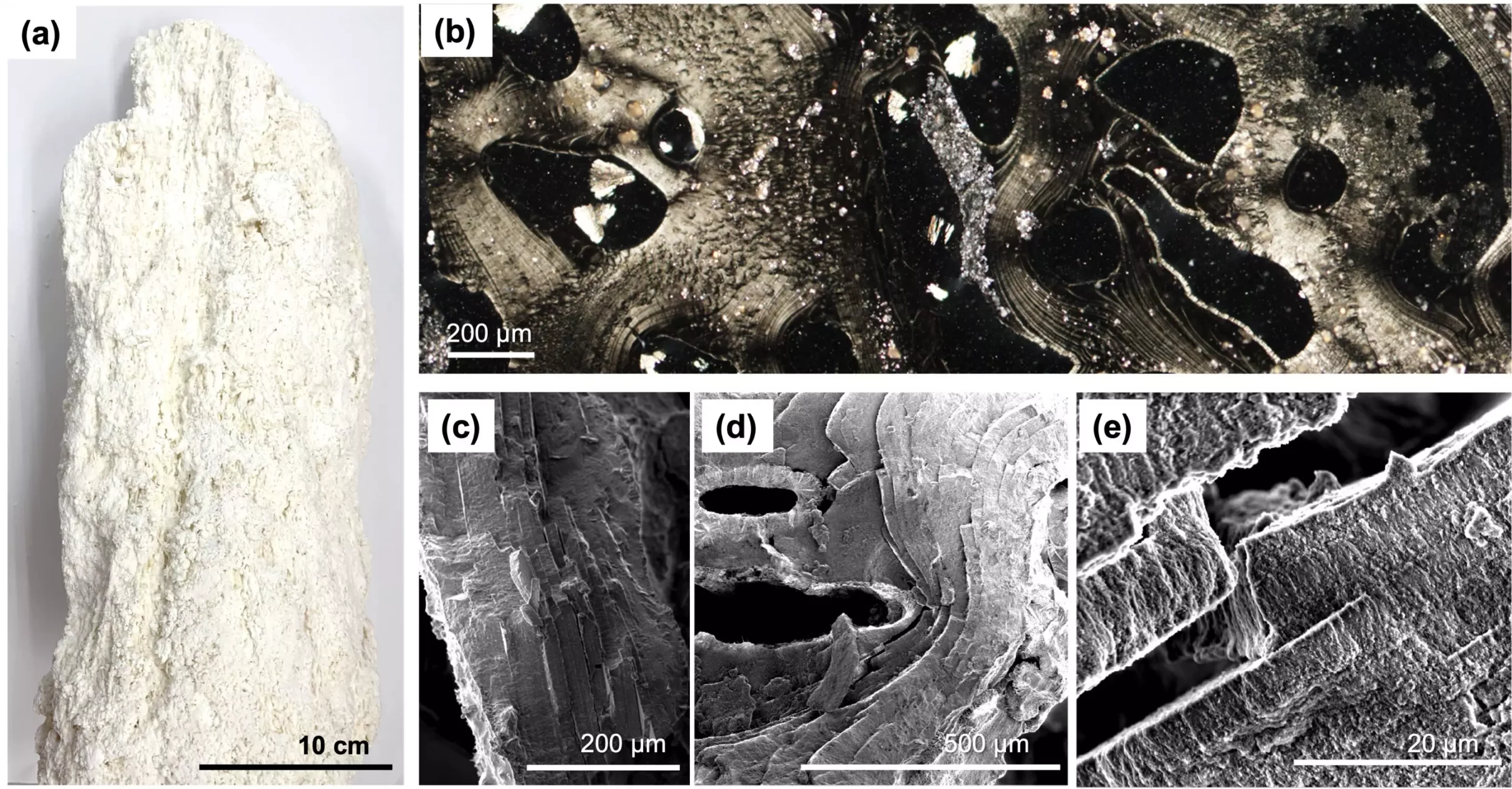In a groundbreaking study conducted by researchers led by Ryuhei Nakamura at the RIKEN Center for Sustainable Resource Science and the Earth-Life Science Institute in Tokyo, it has been revealed that deep-ocean hydrothermal vents harbor inorganic nanostructures remarkably similar to biological molecules crucial for life. Published in *Nature Communications* on September 25, this research offers profound insights into not only the genesis of life on Earth but also introduces innovative possibilities for harnessing energy in blue-energy applications.
These hydrothermal vents, located in extreme depths of the ocean, serve as natural laboratories showcasing some of nature’s most enigmatic processes. Seawater infiltrates the Earth’s crust through fissures, encounters hot magma, and subsequently rises back to the surface, releasing various dissolved minerals and chemicals. It is this unique environment, rich in mineral deposits and chemical gradients, that creates the perfect conditions suitable for life.
The research team focused specifically on serpentinite-hosted hydrothermal vents, which exhibit intricate layered mineral structures formed from metal oxides, hydroxides, and carbonates. These formations allowed the researchers to discover that the natural processes occurring at these vents can mimic essential biological functions, particularly osmotic energy conversion. This process is vital for the survival of organisms, as it relies on differences in ion concentrations to generate energy—an essential function that underpins much of biological activity.
Nakamura notes the serendipitous nature of their findings: “Unexpectedly, we discovered that osmotic energy conversion, a vital function in modern plant, animal, and microbial life, can occur abiotically in a geological environment.” This revelation has the potential to reshape our understanding of life’s origins, suggesting that life could have arisen from geochemical processes rather than strictly biological ones.
Sampling from the Shinkai Seep Field in the Mariana Trench, the research team uncovered critical elements underlying this phenomenon. An 84 cm piece mostly composed of brucite revealed structures akin to channels that can conduct ions. Using advanced imaging techniques, such as optical microscopy and X-ray scanning, they determined that the brucite’s surface has notable electrical properties, with varying charge distribution across nano-channels.
To further investigate these properties, the researchers conducted experiments to measure the current and voltage responses of the samples under different ionic concentrations. Their results indicated that at high potassium chloride concentrations, the samples showed increased conductance proportional to ion concentration, while at lower concentrations, conductance remained constant and was influenced primarily by local surface charges. This is reminiscent of biological voltage-gated ion channels found in neurons, underscoring the inherent connections between inorganic structures and biological systems.
The researchers’ tests on the samples demonstrated their role as selective ion channels similar to those found in living organisms. The nanopores showed preferential conductance patterns based on the type of ions present. For instance, when carbonate ions adhered to the surface, sodium ions were preferentially allowed to pass through, whereas calcium-laden surfaces restricted movement to negatively charged chloride ions.
These findings suggest that the deep-sea hydrothermal vent environments provide not only the conditions necessary for life but also mimic essential biological functions such as ion transport. Nakamura emphasizes the broader implications: “The spontaneous formation of ion channels discovered in deep-sea hydrothermal vents has direct implications for the origin of life on Earth and beyond.”
Beyond their implications for understanding life’s origins, these findings could pave the way for advances in energy harvesting technologies. The concept of blue-energy harvesting, which exploits salinity gradients between different water bodies to generate energy, could benefit from insights into how natural nanopores facilitate ionic transport. As Nakamura suggests, elucidating the processes governing the formation of these structures in hydrothermal vents could lead engineers to devise improved methods for synthesizing materials that can more effectively convert osmotic energy into electrical energy.
Ultimately, the implications of this research resonate across multiple scientific fields. By delving into the depths of the ocean, researchers not only uncover the enigmas surrounding the origins of life but also inspire exciting new avenues for sustainable energy solutions. As we continue to explore these extreme environments, we open doors to both ecological understanding and practical applications that could have a lasting impact on our planet.

